Future Expansion
There are plenty of candidates for future additions to the spacecraft simulated in Project Apollo after the basic historical Command/Service Module and Lunar Module are complete.
Command/Service Module
Support may be added for the proposed Block-III CSM with batteries for power in place of fuel cells, and the Block-IV CSM with batteries for power and LEM engines in place of the SPS.
In addition, the inclusion of a Block-I CSM in future versions has been discussed.
CSM Shuttle
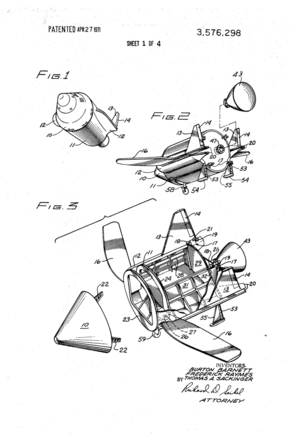
In 1967 North American Rockwell patented a proposal to turn the Apollo CSM into something resembling a miniature space shuttle with a payload bay in the Service Module, fins on the rear, retractable wings in the bottom of the SM, and X-15 style landing gear with a nose-wheel at the front of the SM and skids at the rear:
"An aerospace vehicle comprising a substantially conical forward crew compartment or command module mated to a substantially cylindrical rearward service module. Aerodynamic fairings are provided along the midline on the sides of the cylindrical portion and a substantial distance aft thereof for providing lift at hypersonic velocities and approximately vertical fins are provided on the fairings for aerodynamic stability and control. Wings are mounted within the aerodynamic fairings at high velocities and pivotably extended therefrom at lower velocities and altitudes to provide low speed lift."
This is explained in detail in US Patent 3,576,298.
Apollo to Venus
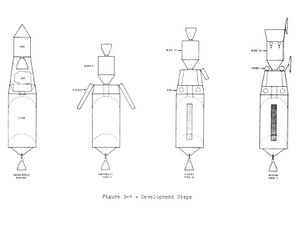
Phase B of the Apollo to Venus plan called for the addition of solar panels to the 'wet workshop' and the use of a Block III CSM so that the astronauts would fly the SIVB into a high altitude orbit for a year-long mission in preparation for an actual fly-by.
Phase C of the Apollo to Venus plan would use an improved version of the 'wet workshop' SIVB with a Block-IV CSM to perform the actual Venus flyby.
Wikipedia has some more information.
Long-Range Flyer
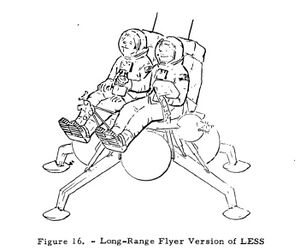
Simple two-man rocket using fuel from the LEM. This could be used for scouting missions to sites up to around 50 miles from the main landing site, or, in an emergency, to carry two astronauts from the lunar surface to rendevouz with the CSM.
Lunar Escape System
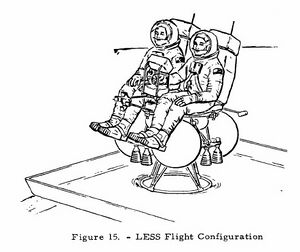
The Lunar Escape System was a simpler folding rocket than the Long-Range Flyer, which would be carried in the descent stage of the LM to allow the astronauts to fly into an orbit where the CM Pilot could recover them in the event that the ascent stage failed to fire.
To save weight, the fuel tanks would be inflatable and a set of detachable legs would be used purely for launch, then left behind on the Moon. No life-support facilities would be included other than the astronauts' suits, and there would be no automated guidance; the astronauts would fly to orbit manually using a pre-programmed pitch program and lunar landmarks. Propulsion would be provided by a collection of CSM/LM RCS thrusters.
Lunar Motorbike
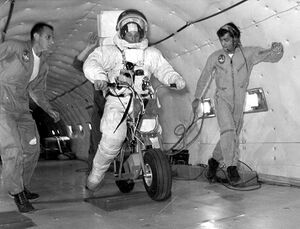
Little information is available, but the 'lunar motorbike' is variously claimed to have been designed as a backup in case the LRV wasn't finished in time for Apollo 15, or planned for use on Apollo 20 in addition to or as a replacement for the LRV.
Lunar Shelter
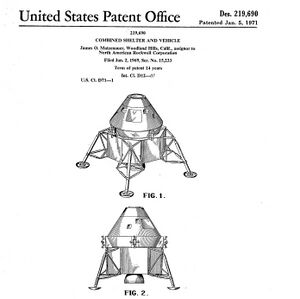
North American Rockwell patented a design for a Lunar Shelter which would use a Command Module and a Lunar Module descent stage to provide long-term accomodation for lunar astronauts on extended stays. Since there was no ascent stage, the Lunar Shelter could carry more supplies and provide more comfortable accomodation than an ascent-capable LEM. The astronauts would use their own LEM to return to orbit, which would be left on the surface in a 'hibernation' mode until the end of their stay.
Original Saturn plans
The original Saturn-A, -B, -C and Nova designs, possibly including the earlier lunar landing plans based on multiple launches, or the single launch putting the entire CSM onto the Moon using the massive Saturn C-8 booster.
For more information see, for example, Saturn-C family and Nova family at Astronautix.com.
Project Able LEM
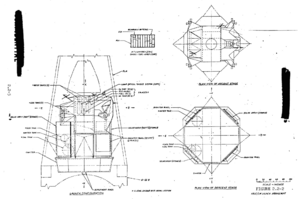
A plan to use a mirror in space to light up parts of the Vietnam jungle at night. A modified LEM with a huge flexible mirror attached would be launched into space where the mirror would unfold.
A similar plan proposed using a modified LEM to fly to Soviet satellites and spray paint over their sensors: the first space vandals.
LM/Apollo Telescope Mount
In the original Skylab plan the Apollo Telescope Mount (ATM) was to be attached to a modified LM ascent stage and launched into orbit aboard a Saturn Ib separately from an Apollo CSM carrying the Skylab crew. After a docking and crew transfer the LM/ATM would be docked with the Skylab station.
See: Illustration
Project Icarus
Proposal to divert or destroy an incoming asteroid by launching 100 Megaton nuclear bombs on Saturn Vs.
See, for example: http://www.thespacereview.com/article/175/1 and MIT Press appear to still be selling a version of the original plan: http://mitpress.mit.edu/catalog/item/default.asp?ttype=2&tid=6840
Saturn 1
The Saturn 1 was the precursor to the Saturn 1b, using an SIV stage in place of the SIVB. The SIV was smaller, with a lower fuel capacity, and used multiple RL10 engines in place of the J2 engine on the SIVB.
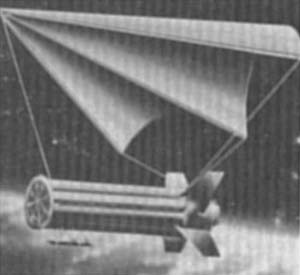
NASA also considered recovering the first stage of the Saturn I with a paraglider.
Saturn 1b MLV
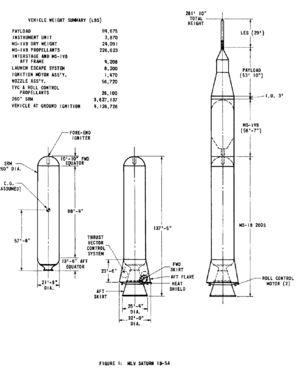
As part of NASA's cost-cutting plans, they studied a 'Modified Launch Vehicle' (MLV) derivative of the Saturn 1b which would replace the S1B stage with a solid rocket similar in size to a shuttle SRB. In essence this was a 1960s version of NASA's new 'Stick' launcher for the CEV.
Saturn 1b with multiple SRBs
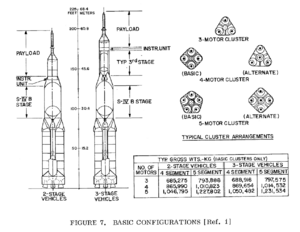
Other Saturn 1b proposals would replace the S1B stage with multiple SRBs, or simply attach SRBs to the side of the S1B stage for extra thrust: that would increase payload rather then reduce cost.
Saturn INT-21
Two-stage launcher used to launch large payloads into Earth orbit. This was used for the Skylab mission.
Saturn S-ID stage
A modified S1C stage which dropped the outer four engines in a similar manner to the Altas dropping two of its engines during launch. As well as multi-stage launchers with greater payloads, it could carry 50,000 pounds to low orbit itself with no second stage.
See Astronautix.
Saturn V-24
Saturn V with stretched stages, new toriodal aerospike engines on the upper stages, uprated F-1 engines on the first stage, and four strap-on boosters with two F-1 engines each. Capable of putting over 500,000 pounds of payload into low Earth orbit.
Skylab
The NASSP 5.x Skylab sources were lost, so a new version will be required once the INT-21 support is added.
Lunar Skylab
McDonnell Douglas (Seal Beach, CA) did a study on modifying the Skylab as a moon-orbiting observatory and station.
See Astronautix.
Alternate Skylab Design - Boeing Proposal
One element of the 1966 Planetary Joint Action Group Mars exploration plan was a Boeing designed alternate Skylab design that could be used to test out components for the Mars flyby spacecraft in addition to an Earth-Orbit science program.
See: Illustration
Apollo/Salyut/Soyuz Test Project
Early in the planning for the Apollo-Soyuz Test Project, consideration was given to have the Apollo dock with a Salyut space station to carry out the joint mission. After two days of mutual operations the Apollo would undock and carry out an Earth Resources survey of the United States before splashing down one fortnight after launch.
This wouldn't require much of a change, since the ASTP docking module should be able to dock with either: it would primarily require new scenarios and both Soyuz and Salyut from other add-ons.
Lunex Project
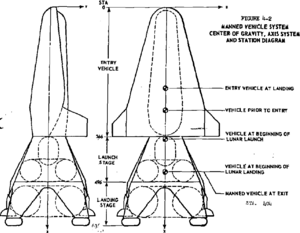
The Lunex Project was a proposed US Air Force alternative to Apollo, which would use a lifting-body re-entry vehicle and land the entire spacecraft stack on the Moon rather than having a separate lander which rendezvoused with the orbiting return craft.
Apollo Logistics Spacecraft
This was an Apollo CSM modified to carry freight and six astronauts into orbit in support of Earth orbital Apollo Applications Program missions. Proposed launch vehicles included the Titan IIIc or Saturn Ib.
Emergency Escape Device

A small capsule launched on a Titan/Agena booster which could be used to rescue the crew from an Apollo Applications Program-based space station in Earth Orbit, or permanently attached to such a station as a lifeboat.
LLRV/LLTV

The Lunar Landing Research Vehicle (LLRV) and later the Lunar Landing Training Vehicle (LLTV), humorously referred to as "flying bedsteads", were created to study and analyze piloting techniques needed to fly and land the tiny Apollo Lunar Module in the moon’s airless environment.
The LLRV is already available at Orbithangar using Vinka's Spacecraft.dll. More informations can be found here: [1], [2]
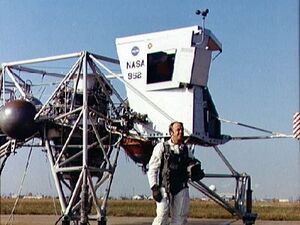
Later the LLTV was used. The LLTV incorporated changes that were the result of the initial LLRV test program and their systems were more like that of the real LM. More informations can be found here: [3], [4]
References
Here are a selection of documents with information on these spacecraft, both historical and planned:
- Space Systems Division, Air Force Systems Command, Lunar Expedition Plan, May 1961
- J.O. Mazenauer, Lunar Escape Systems (LESS) Feasibility Study - Summary Report, June 1970
- J.O. Mazenauer, Lunar Escape Systems (LESS) Feasibility Study - Final Technical Report, September 1970
- George J. Hurt Jr, David B. Middleton, and Marion A. Wise, Development Of A Simulator For Studying Simplified Lunar Escape Systems, April 1971
- David B. Middleton and George J. Hurt Jr, A Simulation Study Of Emergency Lunar Escape To Orbit Using Several Simplified Manual Guidance And Control Techniques, October 1971
- L.A. Ferrara, Summary Description of the AAP Apollo Telescope Mount, April 1968
- Manned Venus Flyby study, Feb. 1, 1967
- Final Report - Studies of Improved Saturn V Vehicles and Intermediate Payload Vehicles, October 7th 1966
- Orbital Payload Potential: Saturn 1B Earth Launch Vehicle Using Solid Propellant Motors, September 1964
- Implementing Dock Launch of MLV Saturn 1B-5A, December 1966
- Saturn Improvement Studies: A Summary
- Modified Launch Vehicle MLV Saturn V Improvement Study Composite Summary Report
- Apollo Systems Description: Saturn Launch Vehicles
- Saturn Illustrated Chronology
- Apollo/Saturn C-1 Launch Vehicle System
- Description of a Saturn C-3 and Nova Vehicle
- Saturn I Summary
- Emergency Earth Orbital Escape Device Study
- Feasibility Study of Utilization of LM for Project Able
- Birth, Life and Death of the Saturn Launch Vehicles
- Nova and Beyond: A Review of Heavy Lift Launch Vehicle Concepts in the POST-SATURN Class
- Final Technical Presentation Modified Apollo Logistics Spacecraft
- Saturn 5 single launch space station and observation facility. Combined mission concept evaluation Final report, November 1967
- International rendezvous and docking mission (Apollo-Soyuz/Salyut), 1971
- An Alternate Apollo Applications Program for Earth Orbit, January 1968